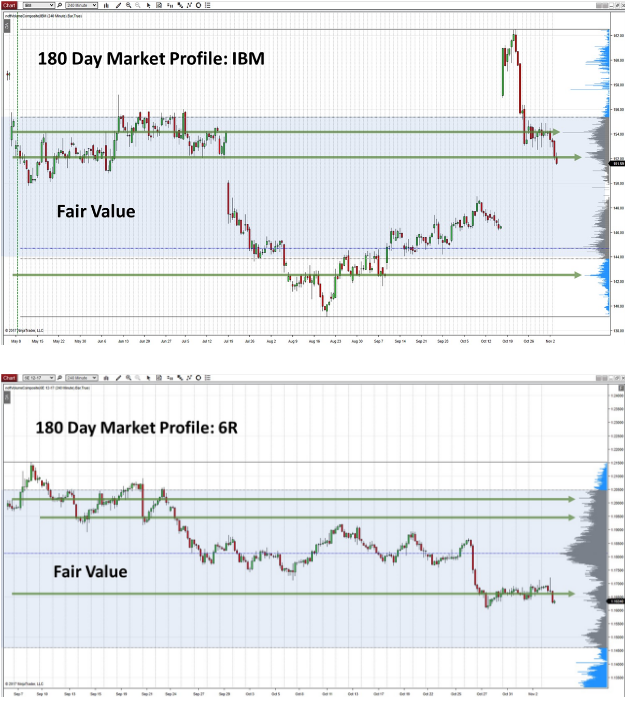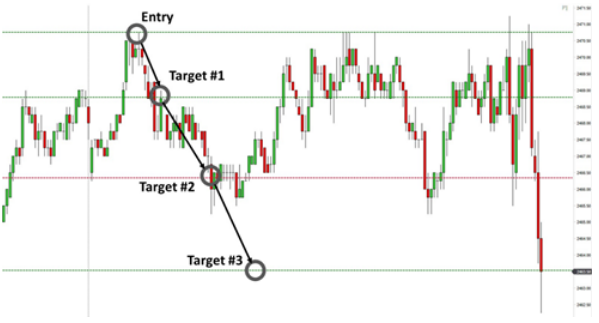
Lining Up Masterful Entries With Macro Analysis
18 feet of pure glory. In an instant, all questions were answered and a legacy was cemented. It was Phil Mickelson’s final putt at the 2004 Masters.
Previous meltdowns, missed cuts and unmet expectations were all in the past. At 6:43 p.m., Mickelson slipped on a 43 long green jacket.
This moment all came simply from lining up a putt and sinking it. Something that millions of futures traders simply can’t do.
It’s not for lack of trying. It certainly isn’t for lack of desire. It comes down to a pure lack of visibility. Imagine walking up to a putt, with your account on the line – and having no idea which way it will break… with every single trade.
Fortunately, you can put this frustration behind you in a matter of seconds – simply by taking a view of the market that institutional traders start with.
Lining up a market in seconds with one look
Chris DiMarco, Mickelson’s partner, did Phil a solid that historic Sunday afternoon in Augusta. His fourth shot finished three inches behind Mickelson. To those of you that don’t follow golf (and could care less about this analogy :)) that meant that he had to go first. The result? Phil got a great look at exactly how his putt would break.
Imagine having a view on how the market will break every moment before you start your trading day? To be able to look at a price level and know what to expect (or not). This all can be brought directly to your chart thanks to a volume profile. Not just any volume profile – but a long-term macro look at volume.
Why should you care? Because a market’s volume profile will tell you which direction the institutional traders have historically broken at each price level. Specifically, whether they’ve seen a good value at that price and increased volume – or if they’ve backed away. If you’re sizing up a trade without this information – you’re basically flying blind.
Check out the following charts across an equity (IBM) and futures market (6E). You’ll quickly see the following:
- High Volume Nodes: Moments where institutional traders put their foot on the gas and increase volume.
- Fair Value: The zone where 70% of the volume has taken place over that period of time.

It takes seconds to add this to your chart and seconds to see the price levels you should be watching for.
Managing your trade for winnings
‘Phil the thrill’ pocketed a tidy sum after sinking that putt. He had closed the second the ball dropped and the check was handed over. For retail traders, exiting is a much more complicated affair.
For most, the idea of ‘letting profits run’ is a fantasyland concept that has no real place in a place like the ES, 6E or even the CL. Every second of every session, exits are often made far too early, or well after crushing losses have been incurred. Hardly ever at the right moment.
This is where institutional traders, looking at a market profile, shine. They have the benefit of seeing and knowing exactly where the high probability exits are. This is because they’ve plotted high and low volume nodes in advance.

Why do they watch and jealously keep these levels to themselves? Because it’s where price has a habit of bouncing. If price breaks through, they watch for the next high or low volume node and again plot their next target for an exit.
It’s like being able to sit at a poker table and know exactly which player is going to fold or call – well before they even look up from their cards. If you’re attempting to manage your trade without knowing these levels – you might as well toss your hard-earned profits out the window.
Going back to our ES, now on a 7-minute chart, you can see how price respects these levels – and how they can be used to plot your exit.
Leave the guessing and the worrying to the millions of traders willing to give their profits back. Stalk these levels with confidence, and if you’re entering with multiple contracts – know exactly where and when you’re going to take money off the table.
When price legitimately breaks through a volume level – target the next. Manage your risk and take your trades confidently along the way.
A professional poker player never heads to the table without a plan and the patience to execute. Likewise, never head into a market without knowing:
- What the long-term profile looks like and where the value zone is
- Where the high and low volume extremes (nodes) are
- What high probability entries you’ll patiently wait for
- When and where you’ll exit based on volume
Forget what Kenny Rogers says. Go ahead and count your money when you’re sitting at the table after trading with market profiles.